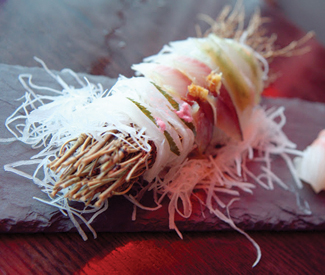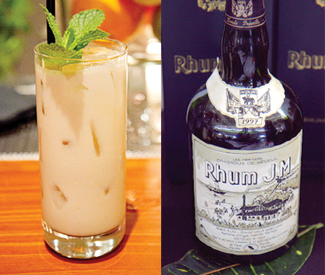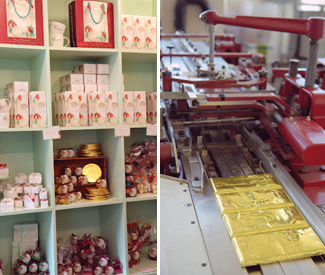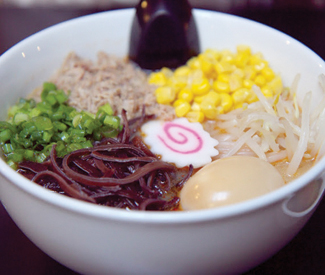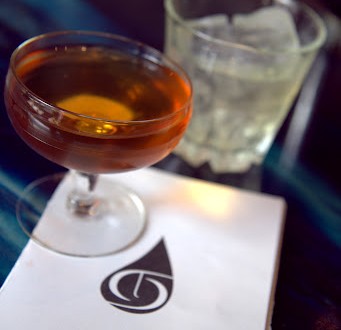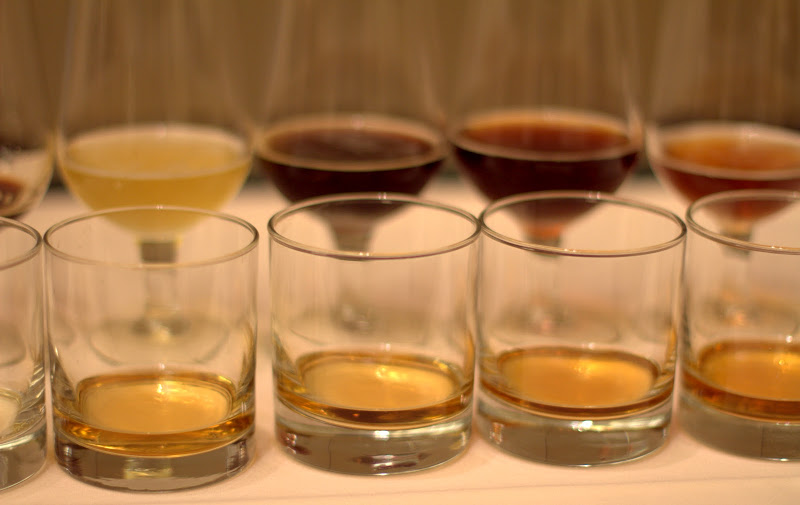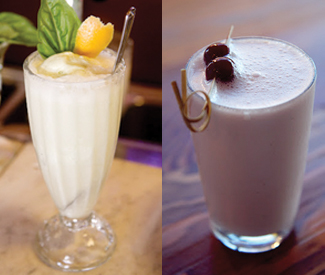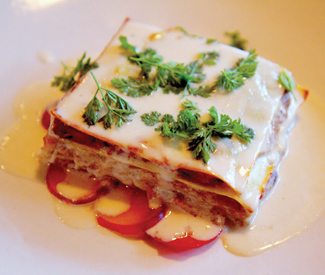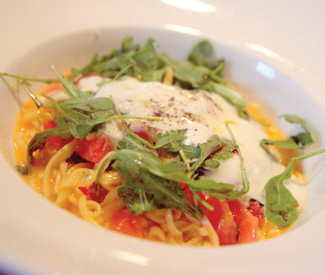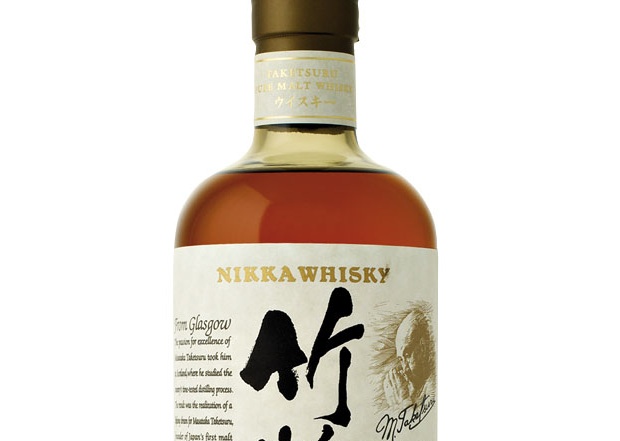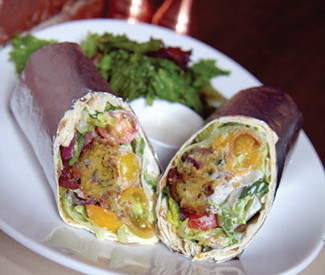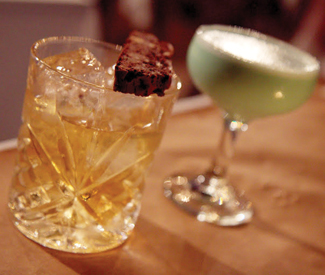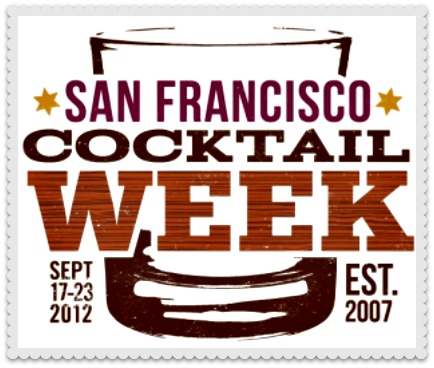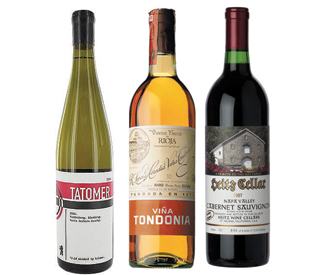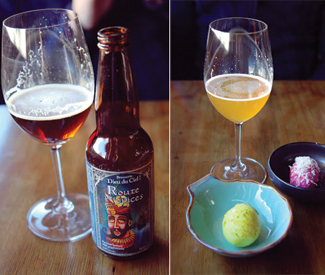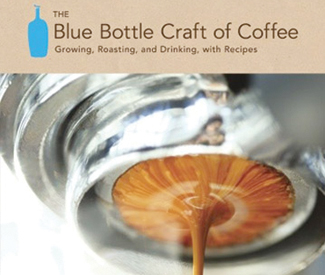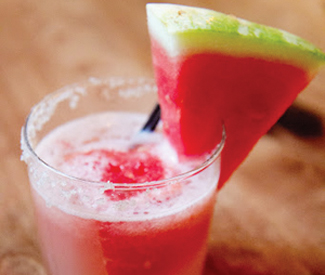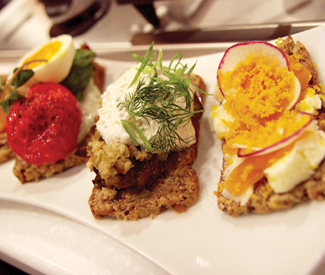Returning to my beloved New Orleans, a city I’ve explored extensively via a path laden with jazz, Dixieland, Zydeco, Ramos Gin Fizzes, Sazeracs, Cajun and Creole food, there were ever more finds, both new and classic. The sweltering humid heat of July during Tales of the Cocktail is not ideal weather to fill up on po boys and boudin, but I managed, and in so doing, savored more of the soul of this most soulful of places.
Though I returned to modern day favorites like Cochon (rabbit and dumplings, boudin and fried alligator, thank you) or ordered appetizers and drinks at the bar at brand new Criollo in the Hotel Monteleone, following are restaurants I’d add to my already long, Nola neighborhood lists – and only one real disappointment.
Best New Restaurant: Maurepas Foods
Visiting six new hot openings this trip, Maurepas Foods, open since the beginning of the year, was easily the best. I approached the restaurant in the midst of a warm, sultry downpour of summer rain in the mellow, ruggedly hip Bywater neighborhood. Maurepas offers high value (everything is $3-17) in gourmet, quality food prepared with care – of the caliber I’m used to at home in SF. It’s also more playful and forward-thinking than higher priced restaurants around town. Salvaged chandeliers, reclaimed woods, the rustic look of a former printing house, all fit in the neighborhood, while the space is colorful, bright with windows, peaceful during late afternoon. Cocktails shine, artisan but affordable – more on that next issue when I cover the latest in Nola cocktails.
Chef-owner Michael Doyle (formerly of Uptown’s Dante’s Kitchen), keeps the food as funky and fun as the artwork lining the walls with his already beloved goat tacos ($8) accompanied by pickled green tomatoes and cilantro harissa on housemade tortillas. I get good goat tacos at home in Cali. and these are winners. A special of the day, lightly fried soft shell crab, feels nearly decadent in creamy curry, while Summer is glorified in peaches and peppers ($8) tossed in lemon balm with mint and coriander. A green onion sausage ($8) from Mid-City deli favorite Terranova is grilled, served alongside arancini (fried Italian rice balls) and figs with black pepper mustard.
I left Maurepas aglow from the hospitable service, confident I’d eaten at what is not just the Crescent City’s best new restaurant, but one of Nola’s best overall, downhome as it is refreshingly current.
Best Po Boy: Parkway Bakery and Tavern
Like any great regional dish, few agree on who makes it best. Which is why, when it comes to po boy sandwiches in New Orleans, I have to a try a few each visit, checking off the long list of those commonly deemed “best” (past favorites include Domilise’s). This trip, I learned from a local while riding the St. Charles streetcar that longtime Parasol’s owners had moved nearby to Tracey’s Irish Restaurant due to a rent hike, the local said. I rerouted there for a hearty (if a bit dry, despite being “dressed”) beef po boy. Nearby, I also visited the adorable Grocery (not to be confused with legendary Central Grocery in the Quarter) known for their “pressed po boys”, or basically panini. Though I loved the friendly sandwich shop, I couldn’t help but wish for a real Cubano when trying their Cuban sandwich.
But the top po boy thus far – of any of my New Orleans visits – may be obvious: I finally made it to Mid-City’s Parkway Bakery & Tavern. A classic since 1911, po boys have been served here since 1929. Lines are long (and slow) with plenty of menu items. But it’s the Parkway Surf & Turf ($8.10/11.30), slow cooked roast beef and fried shrimp in gravy, that’s a game changer. A local tipped me off to this one, rightly affirming there’s no reason to choose beef or shrimp po boys when you can have both. Adding remoulade and horseradish from the condiments table, I avoided the dryness that seems to plague many a beloved po boy. I could not stop sighing in ecstatic glee with each meaty, shrimp-y bite.
Church Brunch: Redemption
Setting outshines the food, at least at Sunday brunch, but sweet service and friendly locals who chatted with me as I dined solo with a book, a bourbon milk punch and chicory coffee, made my meal at the new Redemption in Mid-City a rewarding excursion via streetcar.
The striking, converted church setting is certainly the main attraction. High ceilings, wood rafters, and a stained glass glow imparted a lasting impression, although alligator sausage on waffles ($9 starter) could be amazing if perfected. Pricier dinner entrees ($22-$33) run the seafood to steak gamut with New Orleans influence.
Classic Ice Cream Parlor: Angelo Brocato
If you’re hitting up Parkway Tavern or Redemption in Mid-City, classic ice cream parlor, Angelo Brocato, is not a far trek from either.
Though I find flavors more interesting at La Divinia Gelateria, Creole Creamery or Sucre, I love Angelo Brocato’s history as a family-run, Sicilian sweets outpost since 1906. Refreshing mint ice cream soothes on an oppressive Summer day.
Best New French Quarter Watering Hole: SoBou
Even if the name SoBou (refering to South of Bourbon Street) feels forced, this newcomer (opened in July just a couple weeks before I twice visited) from New Orleans’ restaurant legends (Commander’s Palace Family of Restaurants) shows promise of succeeding on numerous fronts. Though the place can get obnoxiously loud, it’s multi-roomed, casual, festive, whether at individual or communal tables. A friendly bar staff, run by bar chef Abigail Gullo from NYC, beer taps actually at individual tables in the front room (dangerous!), and a menu from executive chef/partner Tory McPhail and Juan Carols Gonzalez are all reasons to go.
I’ll highlight cocktails next issue, but on the food front, playfulness reigns with blessedly local touches, like a Cajun queso ($5), essentially a pimento cheese fondue with pork cracklins’ to dip, and crispy oyster tacos ($7), a delight of fried oysters, compressed pineapple ceviche, mirliton (aka chayote or pear squash, the poster child of Southern vegetables), and Cajun ghost pepper caviar. The best bite of all? Butternut duck “debris” beignets in chicory coffee ganache with foie gras fondue. Ridiculous.
My initial take is SoBou works best as a bar hangout (cocktails or beer) with crowd-pleasing bites and with its convenient locale and all day hours it’s just what the Quarter needed.
Sustainable Louisiana Seafood: Borgne
Obviously all of John Besh’s restaurants can’t be August http://www.theperfectspotsf.com/wp02/2010/09/15/wandering-traveler-34/… nor would I want them to be. The great New Orleans’ chef‘s latest is Borgne, with Executive Chef Brian Landry in the kitchen. It’s a bustling, almost cafeteria-like ode to Louisiana seafood, sustainable whenever possible. While the place feels short of greatness and a couple dishes disappointed, it’s a fine lunch outpost for a beer or a solid cocktail and the likes of three deviled blue crabs ($20), hollowed out and stuffed with their own meat, or skewered duck (misleadingly called poppers – $9), wrapped in jalapeno and bacon.
After-Hours Hangout: Delachaise
For late night goose fat fries ($6) with satay peanut sauce for dipping, smoked salmon johnny cakes ($13), and flank steak bruschetta ($10), alongside a bar-length chalkboard marked with an array of beer, wine and spirits (Campari-based aperitifs are a good way to go here, like a Negroni or Americano), Delachaise, with its magical, white light-draped front patio, is a couple steps above a dive and an ideal nighttime hangout with friends in the Garden District.
Business District Coffee Break: Merchant
Though I must be honest and say dry, bland crepes were a letdown, the clean, white design of 2011 newcomer Merchant in the CBD (Central Business District) makes for an inviting breakfast hangout. Serving Illy coffee, the space feels half chic Rome cafe, half Bay Area, as the design was, in fact, inspired by Apple in Silicon Valley.
Though Illy would be far from the most respected bean choice where I come from (more classic Italian chain than modern day coffee haven), what makes Merchant special as a coffee stop is that there’s nothing else around like it. Third Wave coffee hasn’t really hit New Orleans and though there is something strong to be said for a New Orleans iced coffee laced with chicory even from chains like PJs and Community Coffee, there’s a massive gap when it comes to sources for hardcore coffee aficionados. At least Merchant is trying to narrow the gap on the Italian side with a custom-build XP1 espresso machine and appropriately robust coffee.
Subscribe to Virgina’s twice-monthly newsletter, The Perfect Spot, www.theperfectspotsf.com

